Here is a paper written by Virtus Solis, Space based solar power startup.
Virtus Solis is a funded startup working to develop space based solar power. They would leverage the low cost launch of the SpaceX Starship and modular satellites to enable power to be beamed from space at lower cost than coal or natural gas power. They have an in orbit demo planned for 2027 to beam some power from orbit to the ground. They are working with Orbital Composites on this effort.
Twenty five thousand 1-kilowatt solar power modules would be launched in each reusable SpaceX Starship launch. They would be assembled in space like legos. The orbit for each array would provide power for about 12 hours of a day. Two arrays would provide 7X24 hour power.
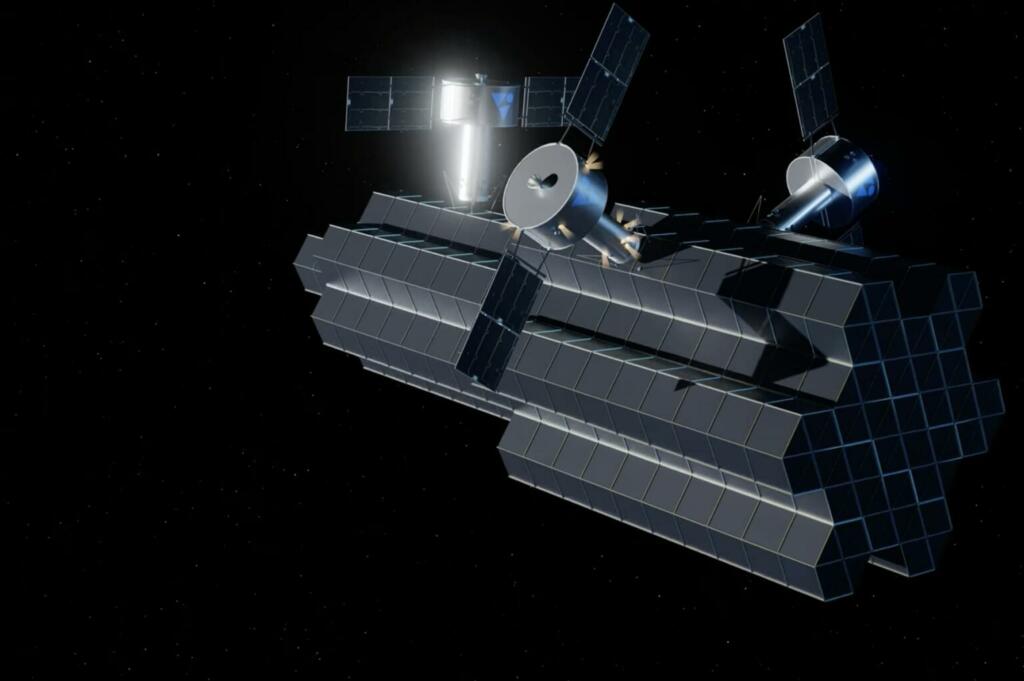
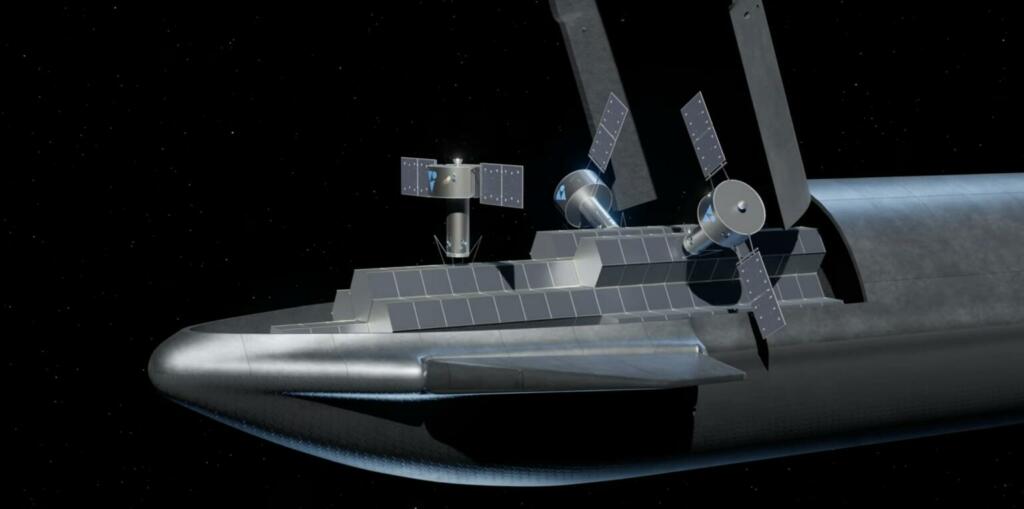
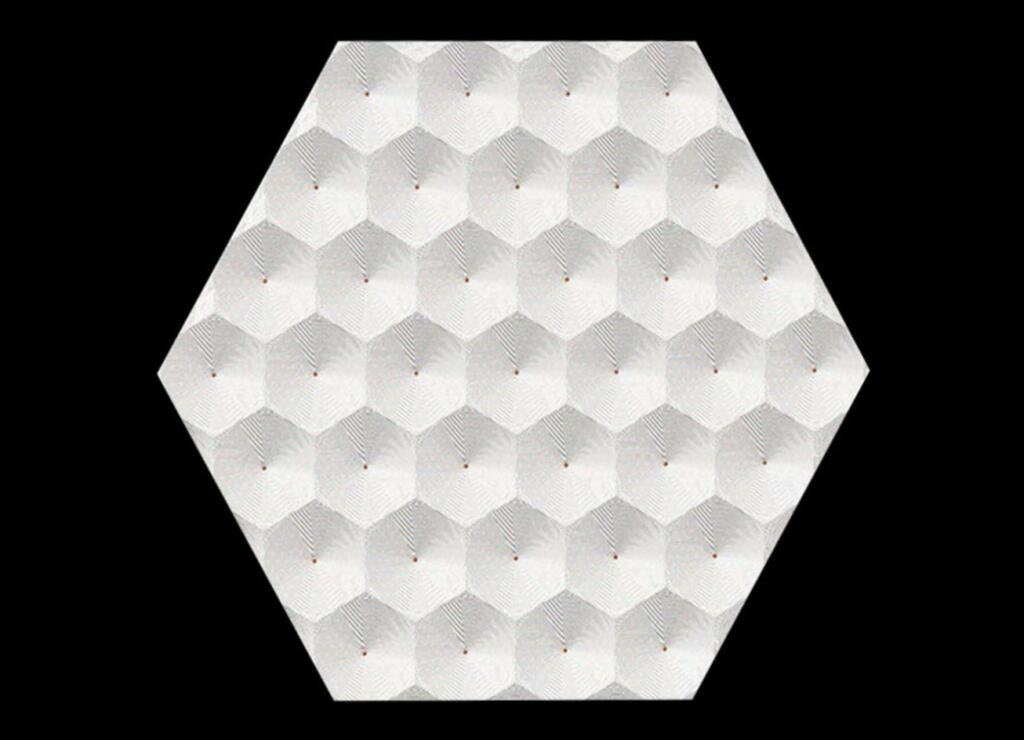
Virtus Solis has made components and tested them on the ground up to about 200 meters of power beaming. The 2027 work will show their capability to beam from orbit.

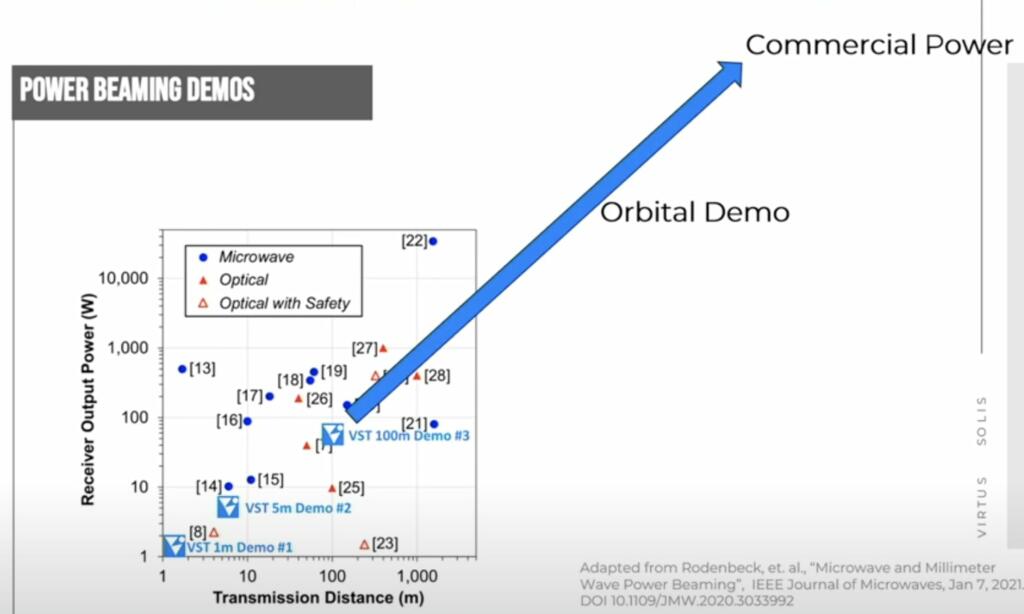
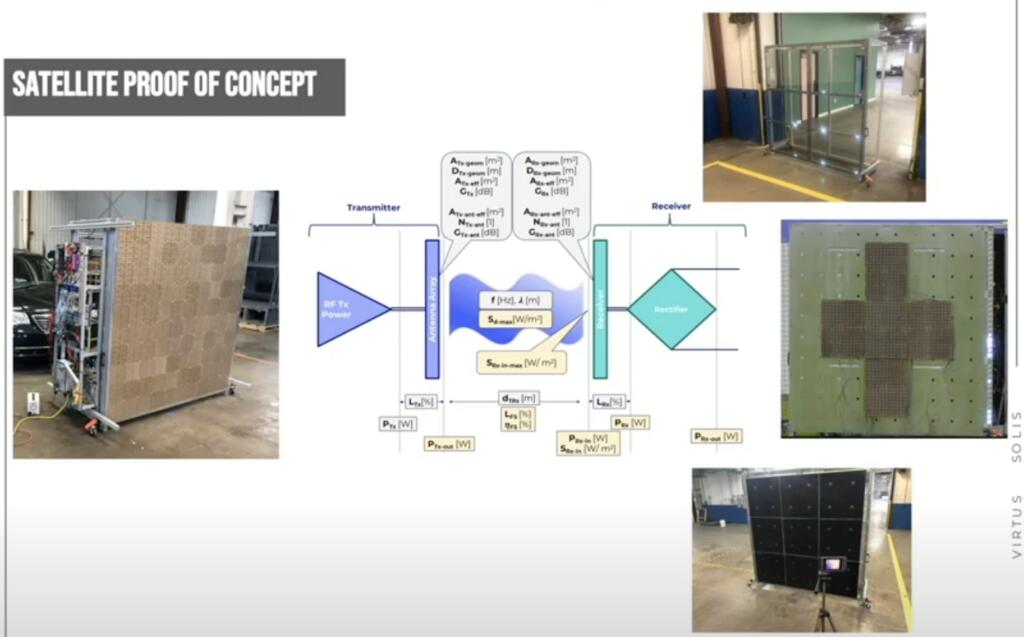
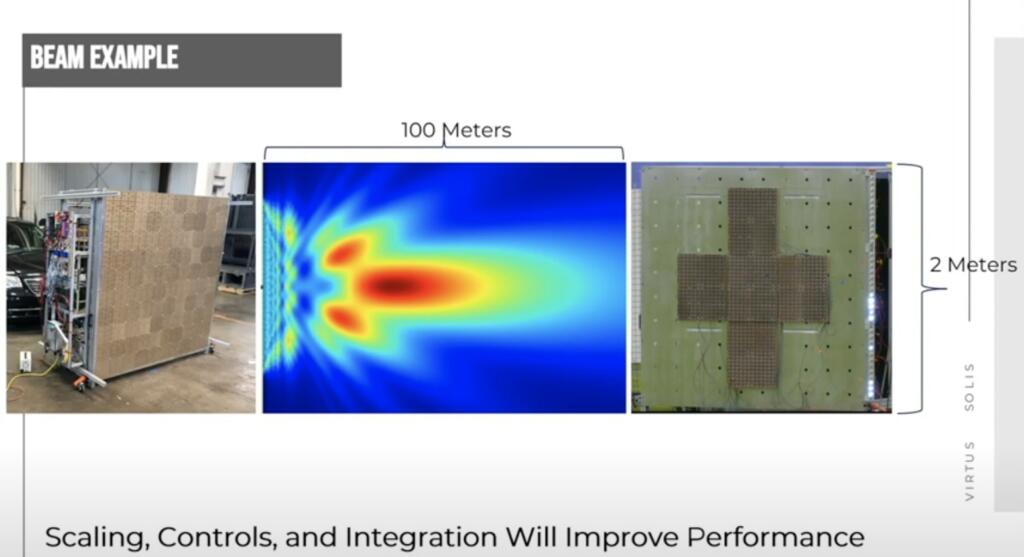
Today, the per kilogram cost of a Falcon 9 launch is $1520. Starship’s larger size would allow it to drop that down by 40% to $970 on day 1 (assuming the total cost of launch for both remains at $100 million). SpaceX Super Heavy Starship, with improved Raptor engines, could launch 300 tons in expendable mode or 180 tons in reusable mode. The expendable Starship would be launching for about $330 per kilogram. A fully reusable Starship that could be flow 20 times (like a Falcon 9 booster) would bring the cost down to about $33 per kilogram. The reusable SpaceX super heavy starship will make the launch of a hundred thousand of these modular satellites affordable for a 200 MW system and then the 8000 MW system. The economics are shown in the table below.
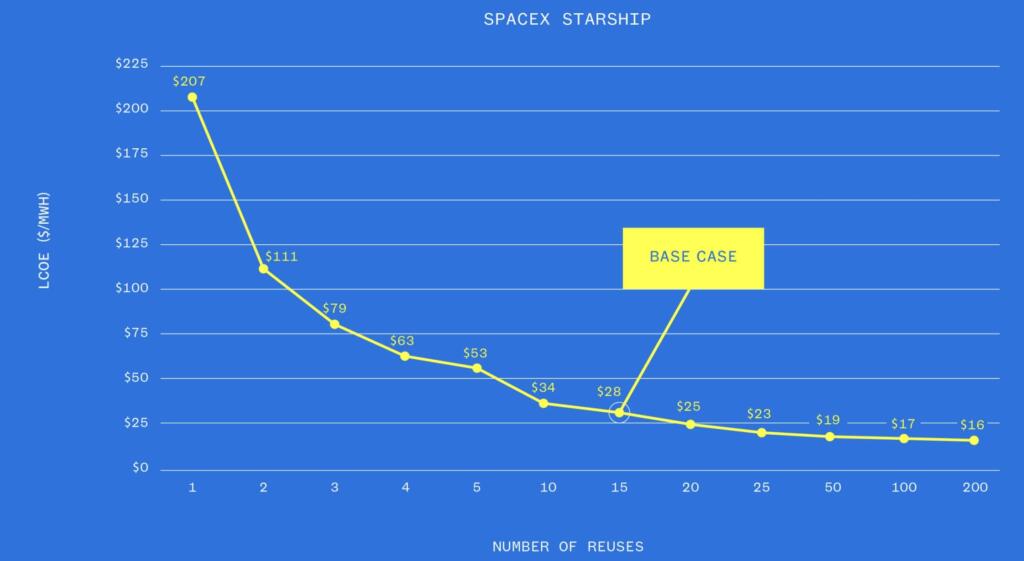
– Each 1.65 meter satellite delivers 1 kilowatt (kW) of power to ground.
– Arrays of satellites scale from 100 MW to multi-GW level.
– Highly elliptical Molniya orbit constellation keeps one or more arrays in line of sight of ground stations 100% of the time.
– 10 GHz microwaves transmit energy to ground rectennas.
Space-based solar power essentially consists of three elements:
* collecting solar energy in space with reflectors or inflatable mirrors onto solar cells or heaters for thermal systems
* wireless power transmission to Earth via microwave or laser
* receiving power on Earth via a rectenna, a microwave antenna
There is about 50 megawatts of solar power deployed in space right now. However, the power is being used in space and is not being transmitted back to the Earth. The 4500+ SpaceX Starlink satellites with version 1.5 starlink have about 7+ kilowatt hours of solar panels and the 1000+ version 2 mini satellites with about 20-30 kilowatts of power.
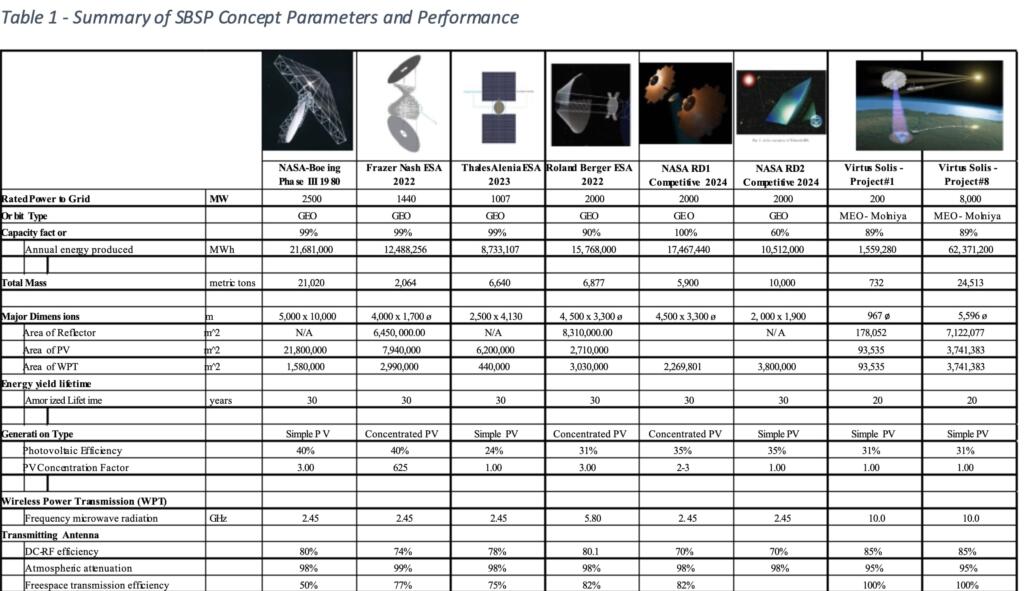

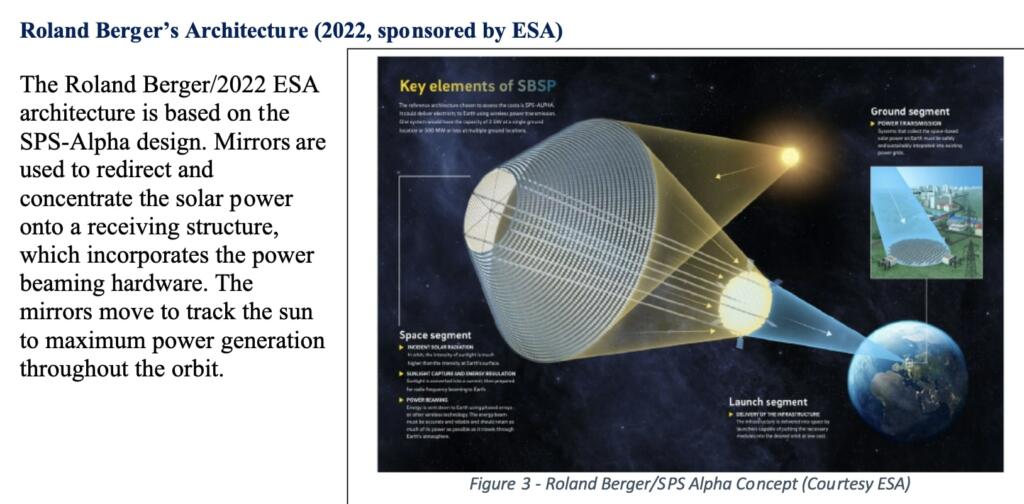
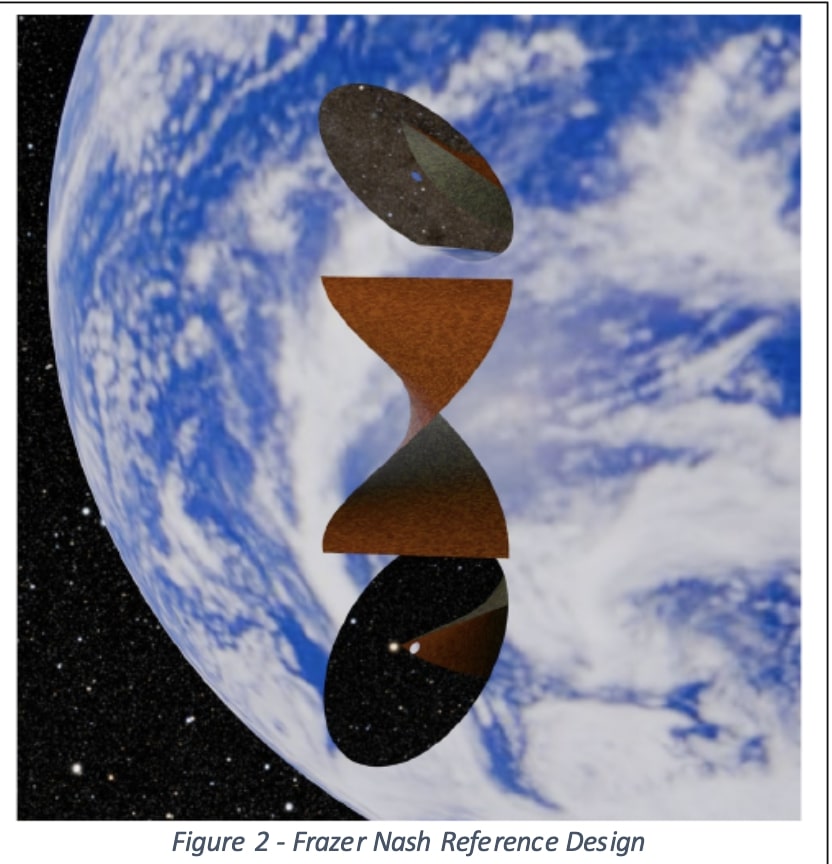

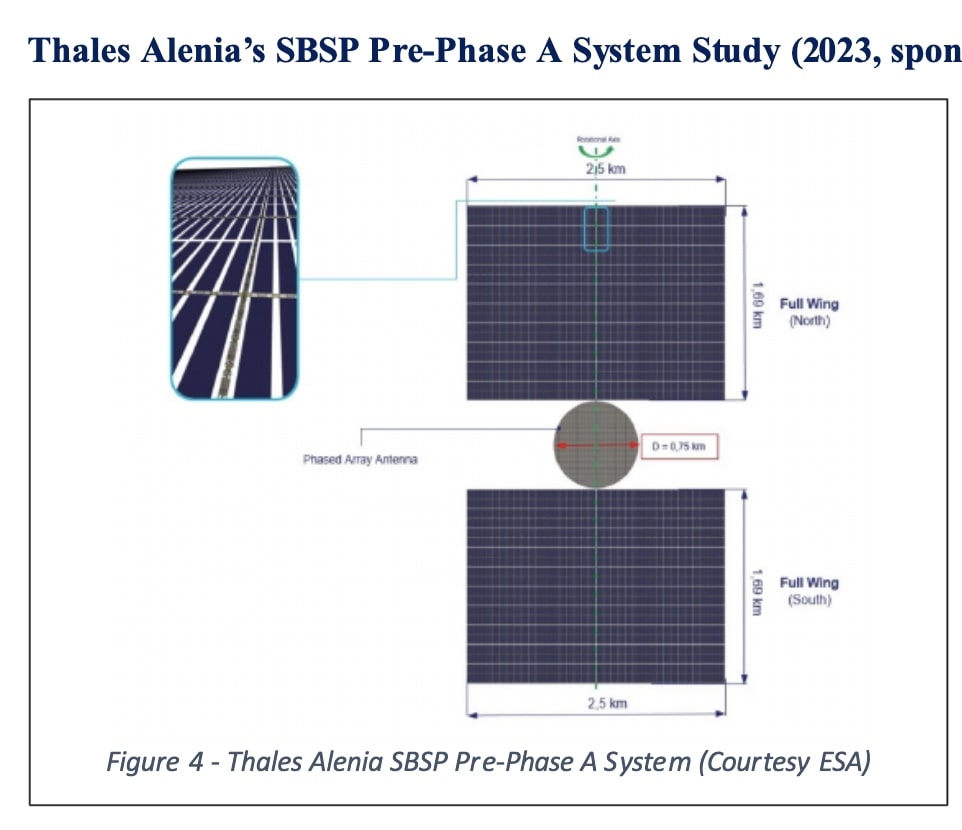

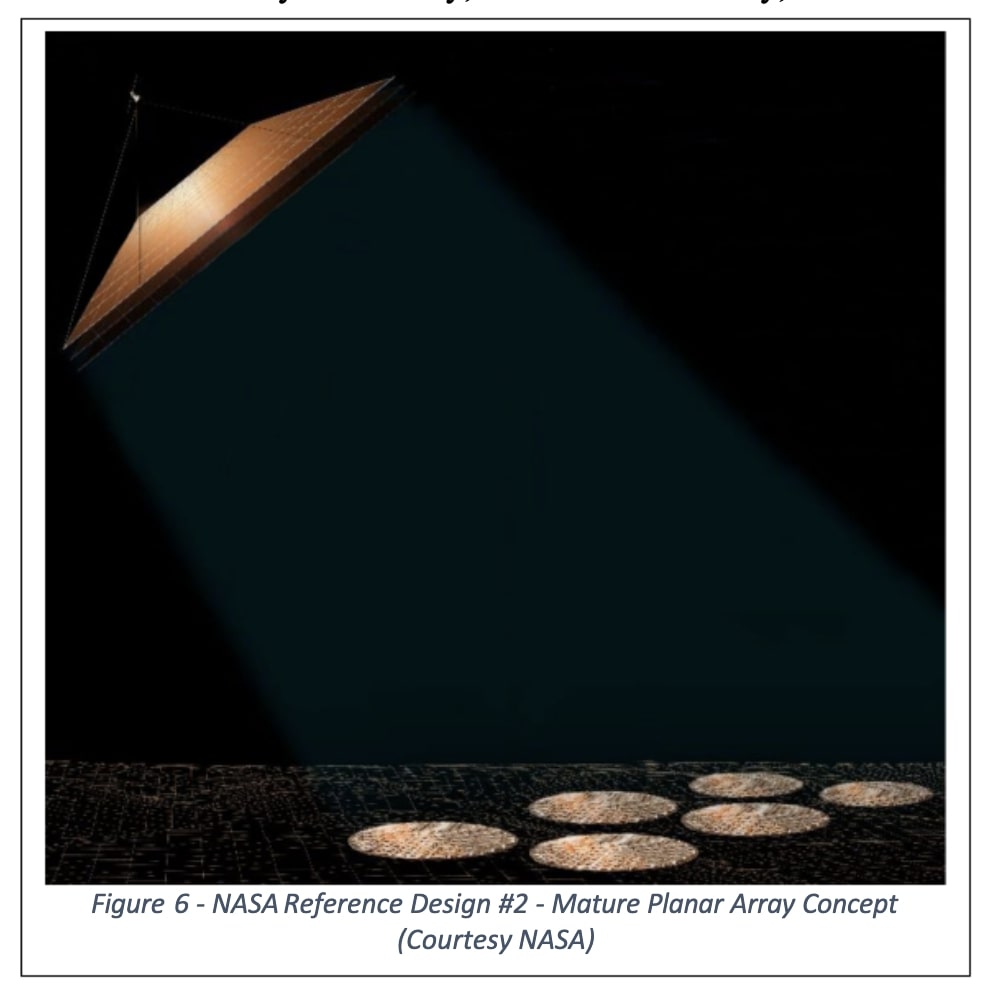
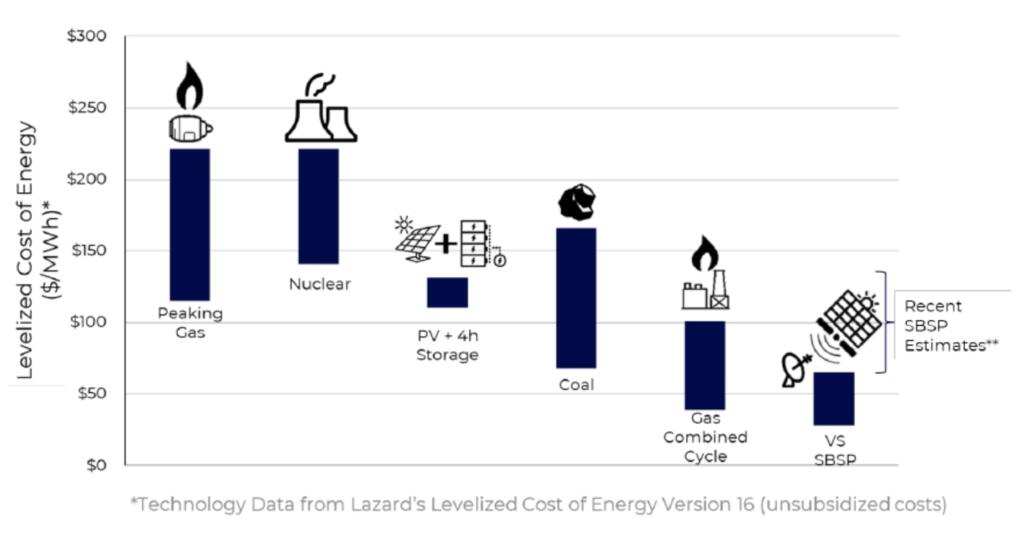
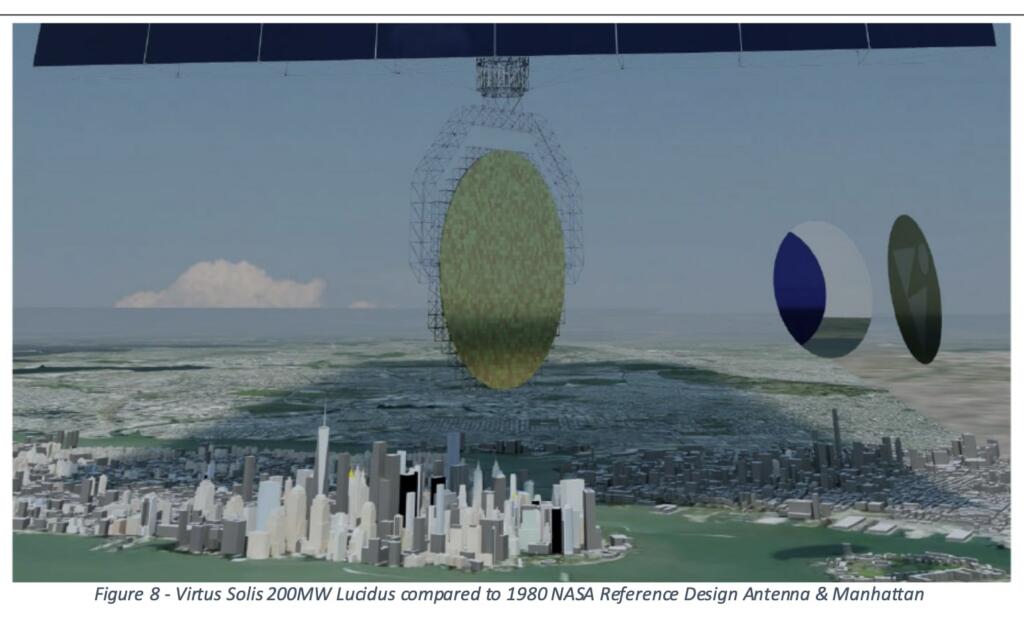
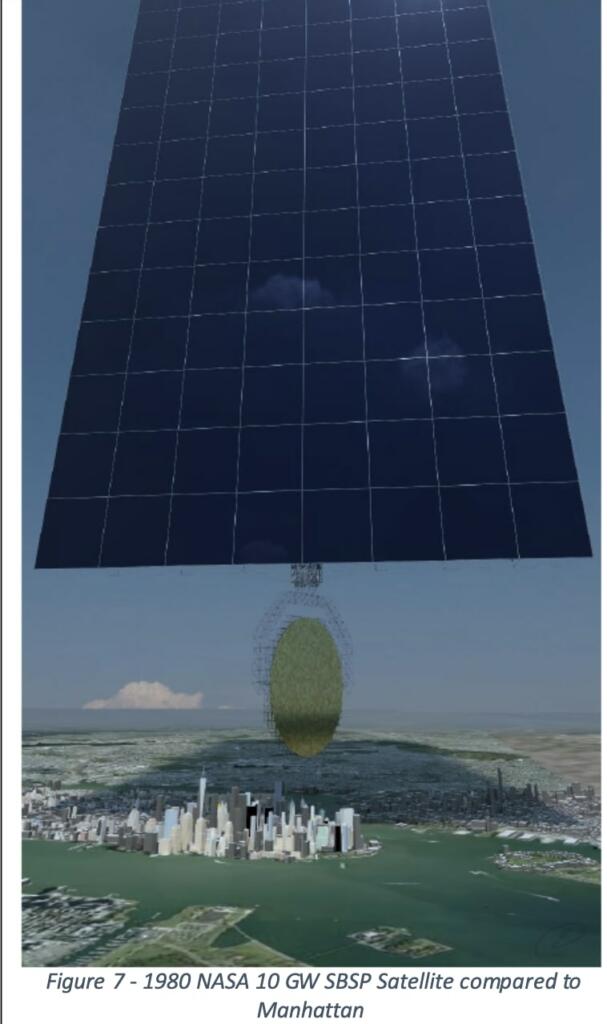
SOLARIS is a space-based solar power (SBSP) proposal of the European Space Agency (ESA). The proposal calls for an in-orbit demonstration in approximately 2030, the first operational station in geostationary orbit by 2040 with subsequent stations added afterwards. Each modular solar panel would be almost one 1km wide, with ground receiving antennas about 6km wide each, generating up to a petawatt of power. In preparation for the 2022 three-year study request, ESA separately commissioned consulting firms Frazer-Nash (UK) and Roland Berger (Germany) assess the potential of the scheme to support the European policy goal of a net-zero carbon economy by 2050. The Frazer-Nash study estimated that the net present value of a European SBSP system from 2022 to 2070 would range between 149 billion and 262 billion euros ($150–264 billion). A central case of 54 gigawatt-class SBSP satellites would produce 601 billion euros in benefits in that period, primarily from avoided costs of producing energy terrestrially along with its carbon dioxide emissions, with 418 billion euros in costs to develop and operate the SBSP system. The Roland Berger study concluded that a single SBSP satellite, based on an existing design, could cost as little as 8.1 billion euros to build and 7.5 billion euros to operate for 30 years, assuming “substantial advances” in key technologies. In a worst-case scenario without those advances, the same design would cost 33.4 billion euros to build and 31.1 billion euros to operate. Despite the uncertainty, it concluded SBSP has strong potential to become a competitive renewable technology. The two ESA proposals are in the table above.

Brian Wang is a Futurist Thought Leader and a popular Science blogger with 1 million readers per month. His blog Nextbigfuture.com is ranked #1 Science News Blog. It covers many disruptive technology and trends including Space, Robotics, Artificial Intelligence, Medicine, Anti-aging Biotechnology, and Nanotechnology.
Known for identifying cutting edge technologies, he is currently a Co-Founder of a startup and fundraiser for high potential early-stage companies. He is the Head of Research for Allocations for deep technology investments and an Angel Investor at Space Angels.
A frequent speaker at corporations, he has been a TEDx speaker, a Singularity University speaker and guest at numerous interviews for radio and podcasts. He is open to public speaking and advising engagements.


… so what is the point of this foray into the wildly impractical? Ah yes, save the planet from those dastardly CO2 molecules plotting the demise of mankind. Or perhaps it’s just a fishing expedition for government handouts created by raiding the wallets of the poor and middle class.
SPS in Molniya orbits(northern, or southern, but not both high latitude) would nicely complement SPS in geostationary orbits(low latitude). Imagine a south polar station powered by the sun all year round!
I wonder what frequencies would be best considering cloud cover?
I sometimes wonder whether anyone reads what I write.
RT ≈ 1.22λB … all in meters
Receiver-diameter × Transmitter-diameter = 1.22 × wavelength × baseline distance
For 10 GHz (c/F = wavelength) = 0.030 m, and a baseline of “geosynchronous orbit” or 35,786 km = 35,786,000 m, and a microwave imperfection factor of 2× (rather than 1.22), we get
RT ≈ 2 × 0.030 m × 35,786,000 m
RT ≈ 2,150,000 m²
This means that the product of receiver and transmitter diameters must at LEAST be 2,150,000. Think about that, for geosynchronous. If say because of the expense of “big things in space”, the transmitter is elected to be ¹⁄₁₀th the size of the ground based receiver:
R (T = R/10) = 2,150,000
R² ÷ 10 = 2,150,000
R² = 21,500,000
R = √(21,500,000)
R = 4,600 m … and
T = 460 m
The patch of dirt has a diameter of over 2.9 miles across! There are 277 rectenna elements per m², so this patch of dirt also needs 4.6 BILLION little antennæ in an array … assuming circular, and if an elongated ellipse is necessary because of the angle-of-incidence from geostationary-to-ground (Earth curvature, all that), then 2× to 3× more elements.
The COST of those elements is significant, Mr. Reading. They’re not needed in this large a number because of the power involved, but because of the physics of waves and being able to focus wavelengths into the tiniest spot from a great distance. And Geosynchronous is a GREAT distance.
Even the 460 m diameter transmitter array is pretty daunting, cost wise. Half a kilometer, or between a quarter and a third of a mile in diameter. With a proportionately similar number of little transmitter antennæ.
This is why optimality is so hard to balance. Obviously — from the first equation — you see that either we need to decrease the wavelength (use higher frequencies), or decrease the baseline (lower orbits), or a combination of the two.
Then the problems become as you surmised, atmospheric absorbtion of the microwaves, and The Solar Big Bird whizzing across the sky and not staying put in a geosynchronous orbit. The wavelength thing might be addressable by going to THz (sub-far-infrared) beams … or not … because of electrical-to-emissions inefficiencies. You would not want to suck up 50% or 75% of the power to conversion losses. Likewise, the closer-to-home orbit problems of whizzing by all the time is addressed by having WAY MORE birds up there. Like Musk’s massive cloud of little internet satellites, gaining coverage over the Earth by having hundreds or thousands of them, in modestly low orbits.
The only problem there, is that ‘cuz of Planet Earth’s ridiculous amount of ocean surface, more than 50% of the time, any particular Bird will be out of sight of land, thus “a receiver”. So, unless there’s good storage of the power in space, it goes unused. That doesn’t make much economic sense, but neither does lofting ridiculously heavy batteries.
Quite a few counters to this problem have been proposed whereby the SPS sats transmit to space based reflectors in a humungous space based geodesic formation. Ah. Now the cost of the program jumps another 10× or 25×, just not to waste power.
It feels — to me at least — that SPS is vexed by no obvious cost-effective solution to both problems.
⋅-⋅-⋅ Just saying, ⋅-⋅-⋅
⋅-=≡ GoatGuy ✓ ≡=-⋅
I read most of them. I suspect most other visitors do, too.
I know you say that the number of antenna elements is driven by the radio ‘optics’, not the power. That’s obvious.
But, at the same time, the number of antenna elements drives the feasible power. So, the conclusion here is “go big, or don’t go at all”. Solar power satellites only make sense if they’re extremely large. It’s not the sort of thing that can be economical at small scale.
That’s why the original O’Neill proposal had gigawatt satellites. Because it obviously wasn’t feasible at small scale, given the minimum antenna size.
It doesn’t have to be cheaper than coal or gas at first. There are many islands and ships that use 50MW+ engines running on oil or similar.
Some of them will pay environmental premiums.
Get under 50c/kWh and you have a decently big addressable market. Probably a few GW.
See reply to William Reading. The inherent problem is the wavelength-versus-distance problem. By going only 1,000 km up, with the things whizzing around planet Earth ever couple of hours in a large constellation not unlike Musk’s flock of micro-satellites, at an efficiently convertible 10 GHz, … still, even with EQUAL transmitter-receiver diameters, the receivers and transmitters need to be about 250 meters across.
Unfortunately for ships, you don’t get to cherry pick and say “well, we’ll be long and thin”. The microwave-distance problem doesn’t know long-and-thin, except if the transmitter is also long and thin. And then, will the bird in the sky be oriented the same as the ship? Ah… likely not.
The little islands idea is pretty good, with the exception being along the lines of “if you have enough money to share the solar-power-satellite constellation, you still need a pretty big receiver antenna”, which of course ought not to be a problem of itself. Because of the receiver antenna size, it is not decentralized like what one might want. Well, it could be for a big island with lots of reasonable sized population centers. Lots of sub-kilometer antennae? Maybe copper wiring is cheaper.
The problem is, “and they’re generally going to be WAY more expensive than a solar PV array of the same size”, by the nature of the complicated rectennae requirements and synchronous low-loss microwave-to-useful-power conversion. Big-patch PV, by comparison, once the parts are received by ship, are basically stone-knives-and-screwdrivers level installation problems.
I rather doubt that 50¢/kWh is likely, given the rest of the costs. The authors have made a good pitch at reducing to near-irrelevance the lofting-to-space part of the cost. But after that, the actual equipment to me at least seems to be of almost irreducible complexity.
⋅-⋅-⋅ Just saying, ⋅-⋅-⋅
⋅-=≡ GoatGuy ✓ ≡=-⋅
“the orbit for each array would provide power for about 12 hours of a day.”
What if there is bad weather, what then? Will they beam it somewhere else? We need consistent and reliable energy sources. If there are clouds and it cant be beamed here then what, will they turn gas plant on one more time?
IMO geothermal should be used more, where it is possible. Very reliable, consistent.
No, the frequency used (10 GHz microwave) is transparent to weather, so if there is bad weather, then the efficiency falls from 98% to 96% and everything keeps working just the same.
Geothermal is great in Iceland, where you’re sitting on a geological fault and there’s magma near the ground. What about Brazil, 8.5 million square kilometers sitting on top of a crystalline shield? You’d have to make geothermal stations either on the Andes or on the mid-Atlantic ridge and then import that energy. No, geothermal might help, but it will never be more than just a side player. What we need is either space solar, or nukes.
+1 to “or nukes”
The ultimate energy technology is energy-dense and resource-efficient, solar and wind will never be in the same ballpark as Fission or Fusion.
When the “basics” seem to be amiss, it leads one (me) to wonder whether the other “givens” are also suspect.
For instance, “a single 1.65 m satellite delivers 1,000 W [to Earth]”.
Now, what’s wrong with that? Well … the MAXIMUM area of such a thing with those dimensions would be 1.65² m² = 2.72 m². At Earth’s orbit of Sol, we generally receive abou 1360 W/m² of insolation. Therefore, there is 3,700 W of insolation hitting a 1.65 × 1.65 meter collector.
Again, where’s the problem? Well, for one, the conversion from photons to electrons is — ahem — always less than 100%. If by cheap but still quite good multi-junction photocells, then maybe 26% conversion is do-able. That’d be about 950 watts, not at Earth, but up there in space. If as is conjectured elsewhere, that a concentrated solar-thermal arrangement is determined to be reasonably reliable and ‘best’, then 38% or so conversion might be possible. Sterling cycle. And that would give over 1400 watts.
However remember that the Devil is in the Details. The 1400 watt solution requires steam engines in space. Steam engines, lubricants, gears, reservoirs, generators, dohickeys, thing-a-ma-bobs. Literally “steam-punk”, LOL. And with that steam-punk comes mass-overhead. LOTS of mass overhead. For … water, reservoirs, generators, whirligigs, valves and hoozidongers. Kind of violates the principle of ultra-light-weight-to-space, doesn’t it? Or requires MAGIC to get it there.
So, we’re back to photovoltaic. While Asteroza identifies “the direct contact rotary joint” problem, it in truth isn’t really a significant problem even in space: with kind of a take on “many fingers make light work”, rotary joints having dozens of copper-graphite roller bearings can arc-less-ly transfer immense amounts of power, 360°, for years and years requiring neither lubricants nor replacements. It just takes good engineering. PV then is the way to go.
I guess the article Makes the Leap that way-higher than 26% photon-to-electron conversion will be just around the corner? That’d help span the concept gap. Getting well into the quadruple digits (i.e. 1200 W electrical, in space) then allows the transmission-and-receiver system to be “only” 80% efficient (which is about what one might expect for a good coherent microwave system based on high voltage “digital” microwave amplifiers, running well over 95% efficient. Synchronous rectification on Earth would likewise keep conversion efficiencies high.
So, maybe that-all is doable.
Still, I didn’t like how close the tolerance-to-not-realistic is.
If they had said 2 m satellite, for 4 m² of area, we’d be in much better realism space.
Anyway. Maybe a small complaint.
________________________________________
However, the really annoying problem of microwave power transmission is that the following relationship basically cannot be outdone.
𝒂 = (1.22 λ) / T
That is, the angular dispersion of a focussed coherent emission source (𝒂) depends on the wavelength (λ) of the emission, and the diameter (T – meters) of the transmitter. For perfectly formed parabolæ (and lenses), say. Real world transmitter rectantennae and other methods may achieve small (2 to 3×) multiple of this.
When the above is used (by trigonometry) to estimate the size of a receiver needed you get
𝒂 ⋅ baseline = receiver emission footprint
Nothing particularly scary about that, I think. If we use ‘R’ for receiver just as used ‘T’ for transmitter:
1.22 λ B / T = R … now move the T over (multiply)
1.22 λ B = T⋅R
This means some multiple of the wavelength, times the baseline (distance between transmitter and receiver) results in a number which in turn must be equal to the product of BOTH the transmitter and receiver diameters. And this is the most perfect case. Real world might be a constant 2× to 3× bigger.
Try out the givens, as a case.
Molniya orbit of 2,000 km apogee
10 GHz (= 0.039 m wavelength)
2× quite-good imperfection factor
2 × 1.22 × 0.030 × 2,000 km × 1,000 m/km = 146,400
That’d be “the constant” that both transmitter diameter and receiver need be. Since sending kilograms to space is expensive, then one presumes that the space transmitter will be smaller, the ground one larger. 10-to–1 maybe? Sure.
146,400 = (T is 0.1 R)*(R)
1,464,000 = R²
1,200 m = Receiver diameter
120 m = Transmitter diameter
See? Formulæ become real-world estimates.
NOTE that this has NOTHING to do with the transmission POWER. It is strictly related to wavelength of microwaves and the physics of transmitting them. And imperfections which can be quantified.
Obviously, if we are going to build a receiver which is well over 10,000 hectares (1 km²) someplace, which by definition ought to be somewhat expensive, having tens of millions of elements … the amount of power received ought to be sizeable, in order to justify the cost. And “safe enough”. Like limited to perhaps 500 watts per m². 500 MW/km²!
This then becomes the “minimum useful system”. IF you desire power 24 hours a day, remember that the problem isn’t just that the MEO satellites are only available apiece 12 hours a day, but that the darn Earth is rotating underneath as well, making targeting of that great hot-spot getting bathed in microwaves all that more problematic. Where exactly is one supposed to put the receivers, when the world is round, mostly covered in oceans, and has real problems with investing trillions in systems that could rather alarmingly cook cities without even trying to be nefarious?
⋅-⋅-⋅ Just saying, ⋅-⋅-⋅
⋅-=≡ GoatGuy ✓ ≡=-⋅
You’d want to use mirrors to focus the light on the actual photovoltaic elements. Large mirrors are pretty cheap and light in space. In principle you can make the mirror wavelength selective, so the PV panel is only getting photons it can efficiently convert, and doesn’t have the tendency to overheat. No reason to shine IR on a visible light PV panel.
Integrate the PV panel and the transmitter array, and just move the mirror around. So you’re not moving the energy around in the array, and all the panels are identical.
There was some research years ago on foldable Fresnel lenses that would focus light on narrow strips of PV panels. You could couple high efficiency PV to large areas of sunlight.
I tend to agree with your assessment.
Here’s the thing … maybe we can chalk it up to “the world’s space programs are mind-bogglingly conservatıve” when it comes to innovating in areas as crucial for successful sub-billion dollar space missions as the PV power cells running the show, but. But if the dichroic-mirror and selective PV strip method is so darn good, wouldn’t you think that the milligram-conscious space programs would be clamoring to implement them, basically on every mission?
I would think so. Since (insofar as I remember) there are either NO or Nearly No missions with such enhanced power systems (I’m not saying that such color-split PV hasn’t flown, but for some reason hasn’t been relied upon for Main Power), I have to wonder what the hang up has been.
My guess, total system mass and complexity — counterbalanced by reliability and “deployability”.
Present space PV seems to be big ol’ folded up panels which through a combination of crafty origami packing and springy joints wants to unfold to a big long linear array. And they’re gossamer-thin (which is to say, attractively low mass). And seemingly astoundingly reliable.
The whole mirrors and focal points business — even if reduced to a focal ‘strip’, which is substantially easier than a point, or a million points — feels like it adds a bunch of requirements-bloat to a mission. You have to point The Array within a handful of degrees of the ‘right way’, or the PV cells don’t get their light. Which in turn limits how one might hope to jostle The Mission about for nominal operations and conditions. Which adds either moment-wheel stabilization mass or … ahem … reaction mass to keep nudging the thing back in true. Mass, mass, mass.
It is for this worry / realization that I — perhaps naïvely! — assumed that some variant on the monolithic multilayer junction PV cell would be optimal. Already 25% conversion is commercially available. Recent research seems to think that 30% may be inexpensive enough to make in bulk, AND durable enough for space deployment. Mass conservation being King, I also believe that being silicon-substrate oriented delivers the mass reduction goods, the ability to post-process wafer PV into absolutely mind-bogglingly thin sheets now “a thing”.
________________________________________
Like an acquaintance at the UCBerkeley School of Bituminous Studies (i.e. roads, bridges, asphalt, tarmac) said at a cocktail party when asked, “So Professor, what so far has been conclusive in building better roads?”, to which he replied, “It turned out to be obvious. Use more aggregate per square meter.” So, why not done everywhere? … the old bugaboo, money. For civil engineering projects, The Budget is the nearly immobile stop-sign. Not absolute cheapness, but there’s A Budget.
I imagine the same for the specification setting of space satellites. The bugaboo is MASS. Mass, and perhaps even more, its mission-killing big brother: deployment reliability. Mission duration reliability. Objective reliability. And the calculus of that has resulted in unexciting but wonderfully reliable silicon PV being the dominant solar tech in space.
⋅-⋅-⋅ Just saying, ⋅-⋅-⋅
⋅-=≡ GoatGuy ✓ ≡=-⋅
Fair enough, in principle dichroic mirrors should be an improvement, but nobody’s doing it. Why?
I think it’s because access to space has been so expensive that they ARE very conservative, the stuff you send up has to work for sure.
I’m hoping that as access costs drop, a lot of this stuff will be experimented with, because failure becomes an accepted option.
Of course, you have a point: In space it’s possible to reduce silicon PV panels to little more than the active material. So maybe they can be made so thin that any mass spent on concentrating mirrors would be better spent on more PV panel.
Everything done by NASA in space has been incredibly conservative. Remember that they launched Sojourner as a test for Spirit.
This is one of Musk’s greatest achievements: lowering the cost to access space enough to enable aggressive engineering.
So what happens when a bird crosses the path between the satellite and the ground station? Say a goose for instance. Do I get free roasted goose as a side benefit?
No, the microwave flux isn’t high enough for that.
You *might* see raptors going blind, though, I think. You’re probably going to get thermals over the rectenna, and raptors love to linger in thermals. And while most of your body can cope with the heat generated by the microwaves just fine, eyeballs happen to be really bad at rejecting heat.
Cataracts were, IIRC, the very first microwave irradiation side effect seen in humans, and at levels that were otherwise just fine. People at radar stations in the north would walk in front of the dish to warm up…
This is really going to need some testing to be sure of.
i wonder what kind of environmental impact all of this microwave beaming would have on the earth’s atmosphere? has anyone done studies on this?
Airplanes would seem to be largely … but not entirely resistant: unlike the grill-covered window of your kitchen microwave oven, planes don’t have microwave grills in their viewing windows. (If they did, you couldn’t make cell-phone calls out of planes at airports. VERY annoying.) Bottom line there, planes would have to avoid the beams. All planes. Big, little, experimental, Helicopters, blimps, paragliders, and … um… birds.
Not much on the atmosphere itself. Chosen wisely, the frequency would have to be in a “near perfect microwave window” of the spectrum.
And dirt-side, on the ground, one might get really good at protecting the dirt underneath the rectantennae, but it also might be pretty leaky in the “oops-we-kind-of-missed” radiation lobes around the edges.
⋅-⋅-⋅ Just saying, ⋅-⋅-⋅
⋅-=≡ GoatGuy ✓ ≡=-⋅
The usual proposal is to put the rectenna in a rural area, and farm under it. (Since it doesn’t obstruct much of the light.) The side lobes wouldn’t have much effect on the plants, but the farmers might be advised to wear tin foil hats.
I’m not entirely joking about that, a farmer probably would be willing to get some income from a rectenna farm, even if it required some unusual precautions of that nature while out in the field.
⊕1 to “Tin Foil Hats”
PS — awe durn… we seem to agree above, too
It’s kind of funny, though: Musk is really down on SPS, but Mars is a much better use case for SPS than Earth. Synchronous orbit is conveniently between the two Martian moons, either of which would be low delta-v sources of material, and is a lot closer to the ground than Earth geosynchronous, only about half the altitude. And Earth doesn’t suffer from months long dust storms.
It would be ideal for supplying power to a Mars colony. Tack on some ion engines, and it could even deliver itself.
The power beamed down would eventually end up as heat one way or another. I have not seen studies on this exactly but I have seen the studies on the “waste heat” that will be generated when most passenger cars are electric only. Estimates are anywhere from 5% to over 40% of power used by cars is converted directly to heat, including charging heat, and everyone here knows how much power it will take to charge these cars globally. If we beam the power from space, there will be a direct conversion to heat by cars and this doesn’t include air conditioning, server farms, industrial etc. I say keep the panels on the ground.
The power beamed down from space would eventually end up as heat one way or another. I have not seen any studies on this subject but I have seen studies on the “waste heat” that all-electric cars produce when driving and charging. The amount varies by vehicle but somewhere around 15% to 40% is an estimate for an average when these cars are dominant. Every person at this site knows how much power it will take to charge these cars and a large portion will end up directly heating the atmosphere with power that otherwise would not hit the planet. This doesn’t take into account other uses such as air conditioning, server farms, industrial, etc. I say keep the panels on the ground.
Actually, all the power going into electric cars ends up as heat in the end. Either immediately due to electrical resistance, or indirectly due to friction.
Isn’t this effectively true for internal combustion vehicles also?
Any SPS design that requires a direct contact rotary electric joint is limited by vacuum arcing. I think it was only a few megawatts are possible, forcing you to use multiple joints.
The Farazer Nash design is also known as Cassiopeia or Hesperus. It tries to use wind chime facing area tricks with a Z fold pagoda receiver architecture to get enough radiator space in it.
Many concepts have a rotary joint problem in other respects. An old solution was to have butterfly mirror concentrators focus on a central disk heat absorber, running a conventional steam generator and steam turbine for power, connected to a gravity gradient stabilized transmitter.
I talked up ‘joints’ in my larger write-up comment, FYI.
I enjoy your posts, GoatGuy. Pop in more often, if you can.
Yeah, Goatguy really is the GOAT. Do you keep a blog as well or something?